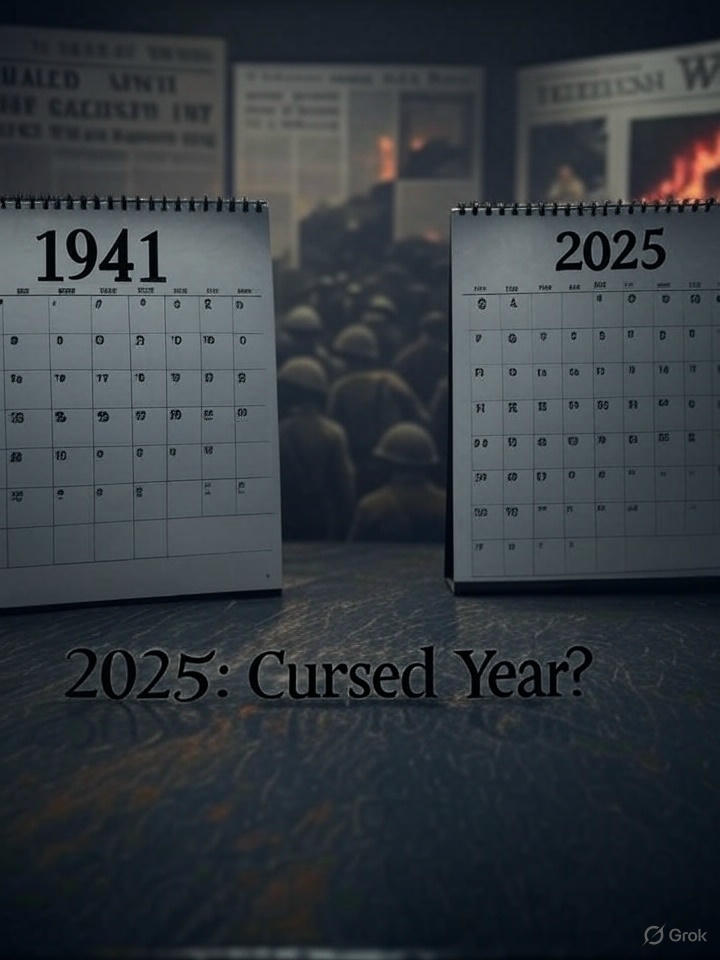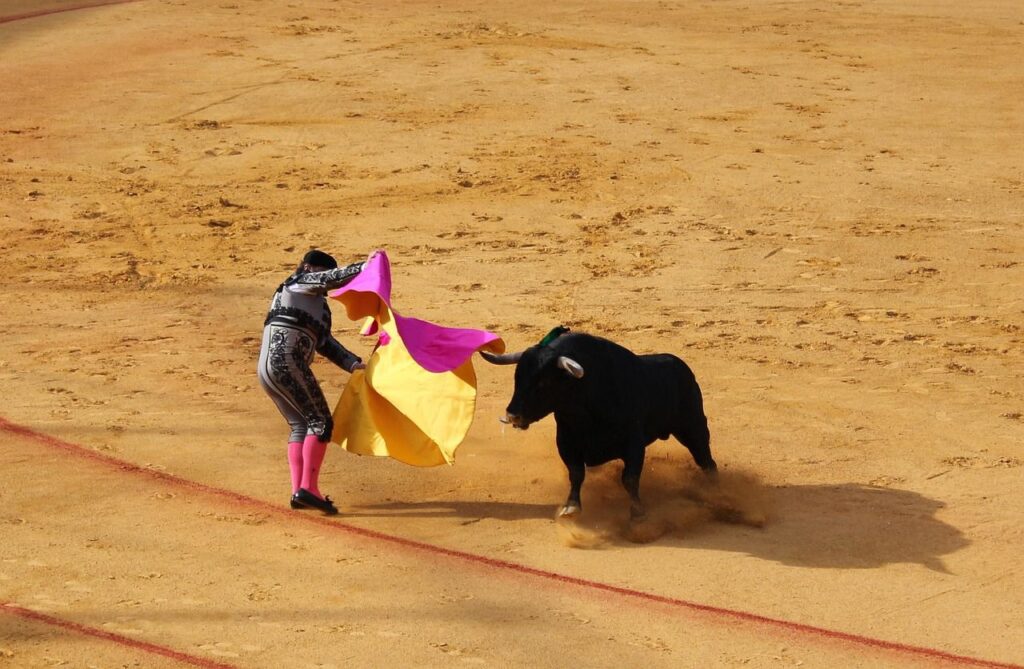Is 2025 Cursed? The Truth Behind Its Connection to 1941 – Insights from Astrology and Experts
In recent times, social media has been buzzing with claims that the year 2025 is “cursed” because its calendar matches that of 1941, a year notorious for its catastrophic events. Many are drawing parallels between the two years, pointing out similarities in dates, days, and even some events, sparking fears that history might repeat itself. But is this fear justified, or is it just a mathematical coincidence amplified by rumors? Let’s dive deep into the truth behind this viral theory, exploring the calendar connection, historical events, astrological perspectives, and expert opinions to separate fact from fiction.
The claim that 2025 is cursed stems from the observation that its calendar is identical to that of 1941. Both years are non-leap years, starting on a Wednesday, January 1. This means every date in 2025 falls on the same day of the week as it did in 1941. For example, if January 1, 1941, was a Wednesday, so is January 1, 2025. This pattern continues throughout the year, with every month’s dates aligning perfectly between the two years. Social media platforms like TikTok, Reddit, and X have been flooded with posts and videos highlighting this eerie similarity, with some users warning that the identical calendars could signal a repeat of the tragedies that marked 1941.
To understand why this comparison is gaining traction, we need to look back at 1941, a year etched in history as one of the most tumultuous periods of the 20th century. It was the height of World War II, a time when the world was engulfed in conflict, suffering, and destruction. One of the most defining events of 1941 was Japan’s attack on Pearl Harbor on December 7, which killed over 2,400 people and drew the United States into the war. This attack changed the course of history, escalating the global conflict. Additionally, Nazi Germany launched Operation Barbarossa, invading the Soviet Union, leading to millions of deaths and widespread devastation. The year also saw brutal massacres, famines, and bombings, such as the siege of Leningrad and the bombing of Malta. For many, 1941 symbolizes a dark chapter in human history, filled with violence and loss.
Fast forward to 2025, and the world is witnessing its own share of troubling events. In the first six months of the year, several incidents have raised concerns and fueled the narrative that 2025 might be following in 1941’s footsteps. For instance, massive wildfires have ravaged California’s forests, causing widespread destruction. In India, a tragic stampede at the Mahakumbh Mela resulted in loss of life, while another stampede occurred during celebrations for the Royal Challengers Bangalore (RCB) cricket team. A terrorist attack in Pahalgam, Jammu and Kashmir, added to the sense of unrest. Perhaps most strikingly, a plane crash in Ahmedabad claimed 241 lives, echoing the kind of large-scale tragedies associated with 1941. On the global stage, conflicts like the Russia-Ukraine war, the Israel-Hamas conflict, and tensions between Israel and Iran have intensified fears of a broader global crisis. Some social media influencers, like YouTuber Kuldeep Singhania, have pointed to these events as evidence that 2025 is mirroring the chaos of 1941.
The calendar similarity is undeniable, but does it mean anything beyond a mathematical quirk? Experts in calendar systems explain that the Gregorian calendar, which is used worldwide, follows a predictable cycle. In this system, a non-leap year has 365 days, and the days of the week shift by one each year. Every 6, 11, or 28 years, the calendar can repeat, meaning the dates and days of the week align perfectly with a previous year. This is why 2025’s calendar matches not only 1941 but also other years like 1913, 1930, 1958, 1969, 1986, 1997, and 2014. The 28-year cycle is particularly significant because it accounts for the interplay of leap years and the seven-day week. So, the fact that 2025 and 1941 share the same calendar is not a mystical phenomenon but a natural outcome of the Gregorian calendar’s structure.
Astrologers, too, have weighed in on this viral theory, offering a more nuanced perspective. Dr. Anish Vyas, director of the Pal Balaji Jyotish Sansthan in Jaipur-Jodhpur, argues that there’s no need to fear the calendar coincidence. He emphasizes that events are shaped by human decisions, geopolitical strategies, and societal conditions, not by the alignment of dates or days. While astrology acknowledges the influence of planetary movements, Dr. Vyas points out that the circumstances of 1941 and 2025 are vastly different. The world has changed dramatically in the intervening 84 years—technology has advanced, diplomacy has evolved, and humanity’s understanding of conflict and cooperation has grown. He advises against succumbing to fearmongering and instead urges people to learn from history rather than assuming it will repeat.
Some astrologers, however, note that 2025 is influenced by specific planetary alignments that could contribute to global tensions. For instance, the planet Mars, associated with war and aggression, is said to be prominent in 2025’s astrological chart. Additionally, configurations like the Shadashtak Yoga (a challenging alignment between Saturn and Mars) and the positioning of Rahu and Mars are believed to create conditions for conflict or instability. These astrological factors are seen by some as paralleling the planetary influences of 1941, particularly when Saturn entered Pisces in 1937, coinciding with the buildup to World War II. However, astrologers caution that these alignments are not deterministic. They influence tendencies, not specific outcomes, and human agency plays a significant role in shaping events.
The comparison between 1941 and 2025 also raises questions about whether history repeats itself. While the calendar match is intriguing, historians and analysts argue that it’s misleading to draw direct parallels based solely on dates. The events of 1941 were driven by specific political, economic, and social factors—such as the rise of fascist regimes, colonial tensions, and the aftermath of World War I—that are not present in the same form today. In 2025, the world faces different challenges, including climate change, technological disruptions like artificial intelligence, and complex geopolitical dynamics. For example, the Russia-Ukraine conflict and the Israel-Hamas war are rooted in modern political disputes, not the same ideological battles of the 1940s. Similarly, natural disasters like the California wildfires are linked to climate change, a phenomenon that was not a major factor in 1941.
Social media has played a significant role in amplifying the “cursed year” narrative. Platforms like TikTok and Reddit thrive on viral content, and the idea of a cursed 2025 has captured people’s imaginations, especially in a world already anxious about ongoing conflicts and disasters. Videos and posts comparing the two years often highlight specific events to create a sense of foreboding. For instance, some point to the Ahmedabad plane crash as reminiscent of wartime air disasters, while others see the Mahakumbh stampede as a modern parallel to the chaos of 1941. These comparisons, while emotionally compelling, often lack context and overlook the unique circumstances of each event.
One of the dangers of this narrative is its potential to spread fear and misinformation. Experts urge people to verify claims before sharing them online. The idea that a calendar match predicts doom is similar to past viral scares, like the 2012 Mayan calendar prophecy, which falsely predicted the end of the world. Such theories often gain traction during times of uncertainty, when people seek patterns to make sense of a chaotic world. By focusing on the calendar coincidence, some may overlook the real causes of today’s challenges, such as policy failures, environmental neglect, or diplomatic breakdowns.
Astrologically, 2025 is not without its complexities. Some practitioners point to the influence of Jupiter, Saturn, and Rahu as creating a volatile environment. Jupiter’s retrograde motion and Saturn’s transit through Pisces are seen as potentially disruptive, especially when combined with Mars’ fiery energy. However, these influences are not unique to 2025. Similar alignments have occurred in other years without catastrophic consequences. Astrologers like Dr. Vyas emphasize that planetary movements should be interpreted as guidance, not as guarantees of disaster. They encourage individuals to focus on personal growth, resilience, and positive decision-making rather than succumbing to fear.
From a practical standpoint, the events of 2025—while tragic in some cases—are not necessarily signs of a cursed year. The California wildfires, for example, are part of a broader pattern of climate-driven disasters that have been escalating for decades. The Mahakumbh stampede, while devastating, is not unprecedented, as large religious gatherings often face logistical challenges. The Ahmedabad plane crash, though horrific, is a reminder of the risks inherent in air travel, not a cosmic signal of doom. Similarly, ongoing global conflicts reflect longstanding geopolitical tensions rather than a mystical repetition of 1941’s horrors.
To put things in perspective, it’s worth noting that the Gregorian calendar’s repetition is not a rare occurrence. Years like 1913, 1930, 1958, 1969, 1986, 1997, and 2014 also share the same calendar pattern as 2025 and 1941. Yet, these years are not universally associated with catastrophe. For instance, 1969 saw the moon landing, a triumph of human achievement, while 1997 marked significant technological and economic growth. This suggests that a calendar match does not inherently predict disaster. Instead, the events of any given year are shaped by a complex interplay of human choices, environmental factors, and global dynamics.
For those worried about 2025, experts offer practical advice: focus on facts, not fear. Before sharing viral claims, take a moment to verify their accuracy. If astrological or spiritual concerns arise, consult reputable experts rather than relying on social media speculation. History teaches us that challenges are inevitable, but so is human resilience. Rather than labeling 2025 as cursed, we should approach it as an opportunity to learn from the past and build a better future.
In conclusion, the idea that 2025 is cursed because its calendar matches 1941 is a fascinating but misleading theory. The calendar similarity is a mathematical coincidence, not a harbinger of doom. While both years have seen significant challenges, the contexts are vastly different, and drawing direct parallels oversimplifies complex issues. Astrologers and experts agree that fearmongering is unproductive and that events are shaped by human decisions, not dates. Instead of succumbing to panic, let’s approach 2025 with hope, wisdom, and a commitment to addressing the real challenges facing our world.




